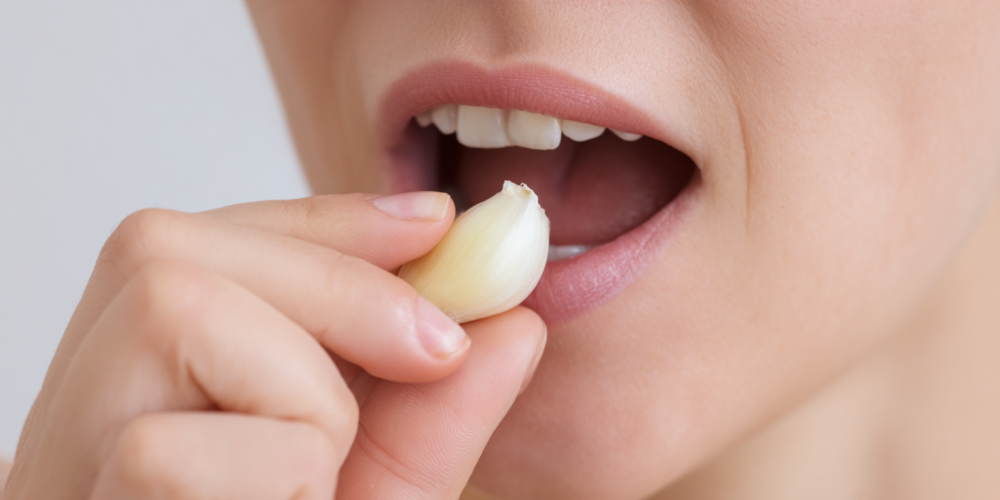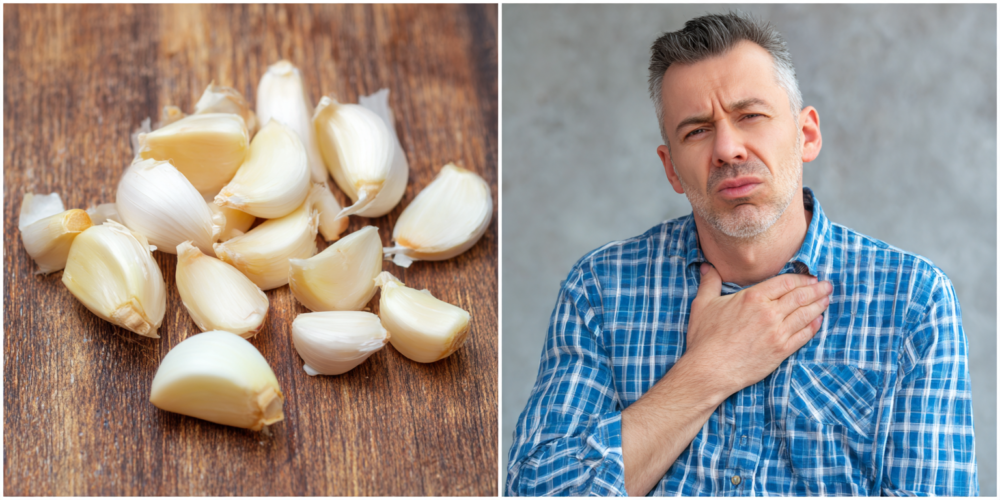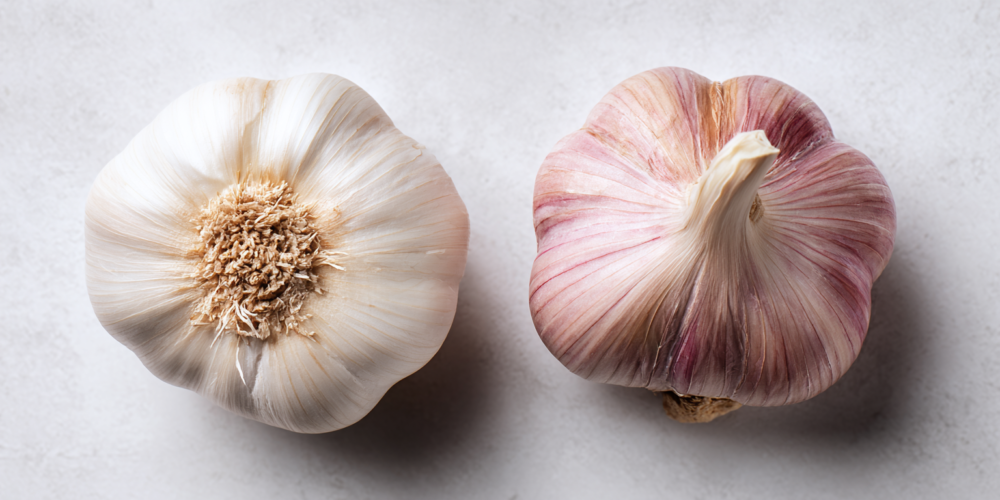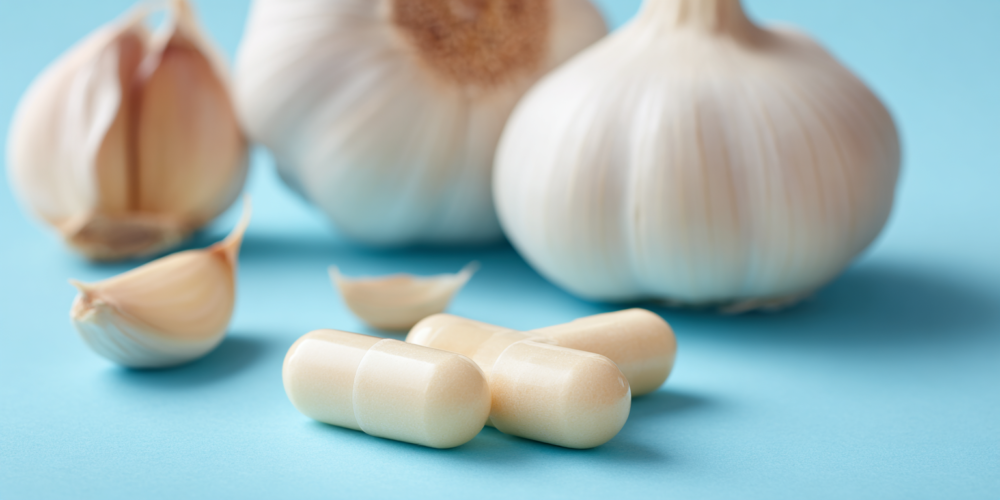
Garlic is a powerhouse in the kitchen and for our health, packed with antioxidants and anti-inflammatory properties. Many of us use it daily, but we might be making some big mistakes that reduce its benefits or even cause unwanted side effects. It’s not just about eating it; it’s about how you prepare and consume it to truly get the most out of this natural remedy.
✅Key Takeaways
- To activate garlic’s key compound, allicin, you must crush, chop, or mince it and let it sit for 3-5 minutes before using.
- High heat destroys allicin, so add garlic at the very end of cooking or use it raw for maximum health benefits.
- Eating garlic on an empty stomach can cause irritation; it’s better to consume it with other foods.
- The ideal daily dose is one to two cloves. More can be toxic, and less might not be effective.
- Fresh, raw garlic is superior to supplements, which can be inconsistent in quality.
⚠️Mistake 7: Eating Garlic Whole

So, I’ve heard this from a lot of people. They wake up, peel a garlic clove, and swallow it whole with a glass of water, like it’s a daily pill. It seems like a quick and easy way to get the health benefits, right? Well, I have to tell you, it doesn’t really work that way. You’re missing out on the best part of what garlic has to offer.
Let me break it down. Inside a garlic clove, the magic happens because of a compound called allicin. This is the stuff that gives garlic its powerful health properties. But here’s the catch: allicin isn’t just sitting there ready to go. It’s in an inactive form. Think of it like a two-part epoxy glue; you have the resin and the hardener in separate tubes, and they don’t do anything until you mix them together.
Garlic works in a similar way. It has the main compound (called alliin) and an enzyme (called alliinase) stored in separate little compartments within the clove’s cells. When you swallow the clove whole, your stomach acids might break it down a bit, but it’s not enough to properly mix these two components. The cell walls remain mostly intact, and the chemical reaction needed to create active allicin never really happens.
So, how do you activate it? It’s simple: you have to damage the garlic. You need to break down those cellular walls to let the alliin and alliinase mix. There are a few ways to do this:
- Crush or Mash It: The best way is to use the flat side of a knife or a garlic press to crush the clove. This ruptures a ton of cells.
- Chop or Mince It: Finely chopping or mincing the garlic also works really well.
- Grate It: You can also use a fine grater.
After you’ve crushed, chopped, or grated it, wait for about 3 to 5 minutes. This waiting period is important. It gives the enzyme enough time to work its magic and convert the alliin into the powerful, active allicin. After that short wait, the garlic is ready to be used, and you’ll get its full health potential.
⚠️Mistake 6: Cooking It The Wrong Way

There’s a saying that goes, “boiled garlic is lost garlic,” and it’s pretty accurate. We all love the flavor that cooked garlic adds to our food, but if you’re cooking it for its health benefits, you have to be careful. That amazing compound, allicin, is very sensitive to heat.
When you toss minced garlic into a hot pan with oil at the beginning of your cooking, you’re likely destroying most of the allicin before it even has a chance to do any good. High temperatures break it down quickly. This means that while your food will taste great, you won’t be getting the anti-inflammatory or antioxidant benefits you were hoping for.
I get it, though. Raw garlic can be intense. It has a sharp, pungent flavor and can sometimes leave you with some serious dragon breath. For some people, it can also be a bit harsh on the stomach. So, what’s the solution if you can’t handle it raw?
You don’t have to give up on cooked garlic entirely. The trick is to cook it for very short periods and at lower temperatures. A good rule of thumb is to keep the cooking time under 3 minutes and the temperature below 140°F (60°C). In practical terms, this means you should add the garlic at the very end of the cooking process. When your stir-fry, soup, or sauce is almost done, stir in your pre-chopped (and rested!) garlic for the last minute or two. This way, you get some of the flavor, it’s a little less intense, and you preserve a good amount of the allicin.
⚠️Mistake 5: Taking It On An Empty Stomach

This goes back to the idea of swallowing a garlic clove first thing in the morning. Many people believe that taking it on an empty stomach maximizes absorption, but for a lot of us, this can lead to some uncomfortable problems. Your stomach is most acidic in the morning when you wake up, and it’s more prone to irritation.
Garlic is a potent substance and can be a strong irritant to the stomach lining. When you eat it on an empty stomach, you might experience issues like:
- Stomach pain or cramping
- Heartburn or acid reflux
- Bloating and gas
- An even stronger case of bad breath that lasts all day
If you’ve ever tried this and felt a burning sensation or discomfort, this is why. To avoid these side effects, it’s much better to consume garlic with other foods. The food acts as a buffer, protecting your stomach lining from the direct irritation of the garlic. You can add raw, minced garlic to salads, mix it into dressings, or stir it into your meals just before serving. This way, you get all the benefits without the stomach upset.
⚠️Mistake 4: Getting The Dose Wrong

With natural remedies, just like with medicine, the dose makes the poison. My old toxicology professor used to say that even water can be toxic if you drink too much of it. It’s a rare condition, but people can actually get seriously ill from drinking 15-20 liters of water in a day. The point is, everything has an optimal dose.
Garlic is no different. If you eat too little, you simply won’t see any benefits. If you eat too much, you can experience negative side effects. So, what’s the right amount?
Most scientific studies on garlic’s health benefits use a specific dosage range. Based on that research, here’s a good guideline:
- For sensitive people: If you find that garlic gives you an upset stomach or you just don’t love the strong taste, aim for one medium-sized clove per day. This is a good starting point to get the benefits without the discomfort.
- For those who tolerate it well: If you love garlic and it doesn’t bother you, you can have up to two medium-sized cloves per day. This is generally considered the maximum effective dose.
Of course, if you cook a big meal with a whole head of garlic one day, it’s not going to be a problem. But if you’re using garlic consistently as a natural health supplement, sticking to that one-to-two-clove range is your best bet. Less than that might not work, and more than that increases the risk of side effects without adding more benefits.
⚠️Mistake 3: Not Knowing Your Garlic Types

Did you know there’s more than one type of garlic out there? When you go to the grocery store, you’ll most likely see the common white garlic. When choosing it, make sure the bulb is firm to the touch. It shouldn’t be soft, shriveled, or have brown spots. A firm, young garlic clove will have the most potent properties.
But then there’s black garlic. You might have seen it in specialty stores or restaurants. Black garlic is just regular garlic that has been aged for a long time under controlled heat and humidity. This fermentation process changes its color, texture, and flavor. It becomes soft, sweet, and almost balsamic-like, without the sharp bite of raw garlic.
Some studies suggest that black garlic might have two to three times more antioxidants than regular white garlic. However, it has less allicin. It contains a different compound that helps your body absorb what little allicin is there more effectively. So, it seems like it could be a healthier choice. The big problem? Black garlic is much more expensive and harder to find. For most of us, sticking with fresh, high-quality white garlic is the most practical and evidence-backed choice.
⚠️Mistake 2: Forgetting It’s A Natural Blood Thinner

One of the well-known benefits of garlic is its ability to help prevent blood clots. This is great for cardiovascular health. However, this same property can be a problem for certain people. If you are already taking anticoagulant medications (blood thinners) like warfarin or acenocoumarol for a condition like an arrhythmia or because you’ve had a clot before, you need to be careful. Adding daily garlic to your routine could potentially increase the effect of your medication, making your blood too thin. It’s best to talk to your doctor before making garlic a regular part of your diet.
Similarly, if you have surgery scheduled, it’s a good idea to stop eating garlic about 5 to 6 days beforehand. This helps ensure your blood clots normally during and after the procedure, reducing any risk of excessive bleeding.
⚠️Mistake 1: Thinking Garlic Pills Are The Same

In our modern world, it’s easy to reach for a pill for everything. And yes, there are garlic supplements and pills available. Some people prefer them because they’re convenient and don’t cause bad breath. However, I’m a firm believer that you can get everything you need from real, whole foods.
The problem with supplements is that the market isn’t always well-regulated. The amount of active allicin can vary wildly from one brand to another. Some pills may have been exposed to heat during manufacturing, which destroys the allicin. They might also contain additives or other substances you don’t need. To find a good garlic supplement, you’d have to do a lot of research.
Our recommendation is simple: stick to the real thing. Choose fresh garlic, crush or chop it, let it sit, and add it to your food. It’s the easiest, cheapest, and most reliable way to get all the amazing benefits.
📈A Final Recap On Using Garlic Correctly
Let’s put it all together. To use garlic like a true natural medicine, follow these simple steps:
- Preparation: Use fresh white garlic. Crush, chop, or mince it, then let it sit for 3-5 minutes before you eat it.
- Consumption: Add it raw to foods like salads and dressings. If you must cook it, add it at the very end of cooking (for less than 3 minutes) to preserve its benefits.
- Dosage: Stick to one clove per day if you’re sensitive, and up to two cloves per day if you tolerate it well.
Remember, food can be a powerful tool for your health, but you have to know how to use it right. By avoiding these common mistakes, you can make sure garlic is working for you, not against you.

